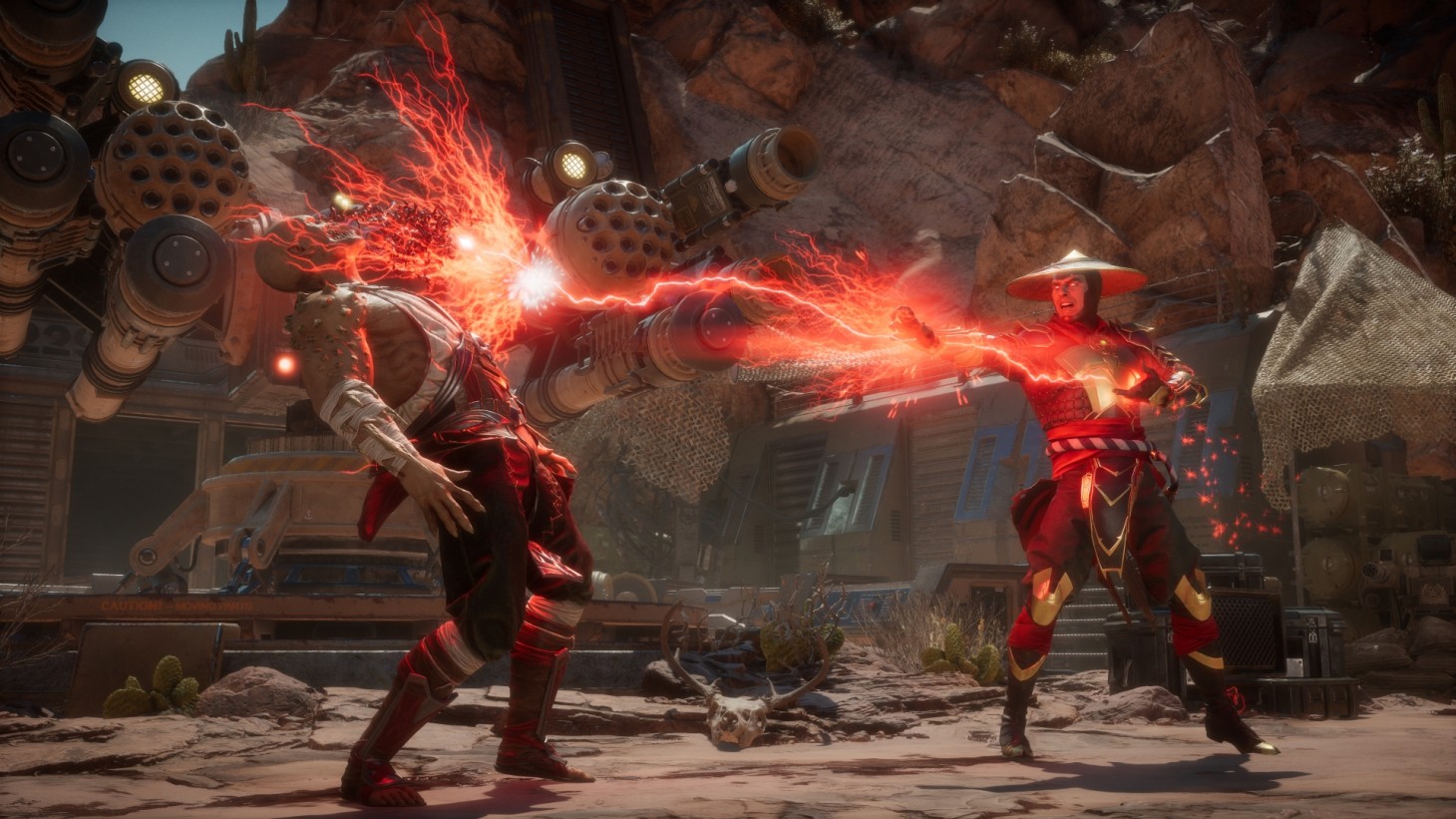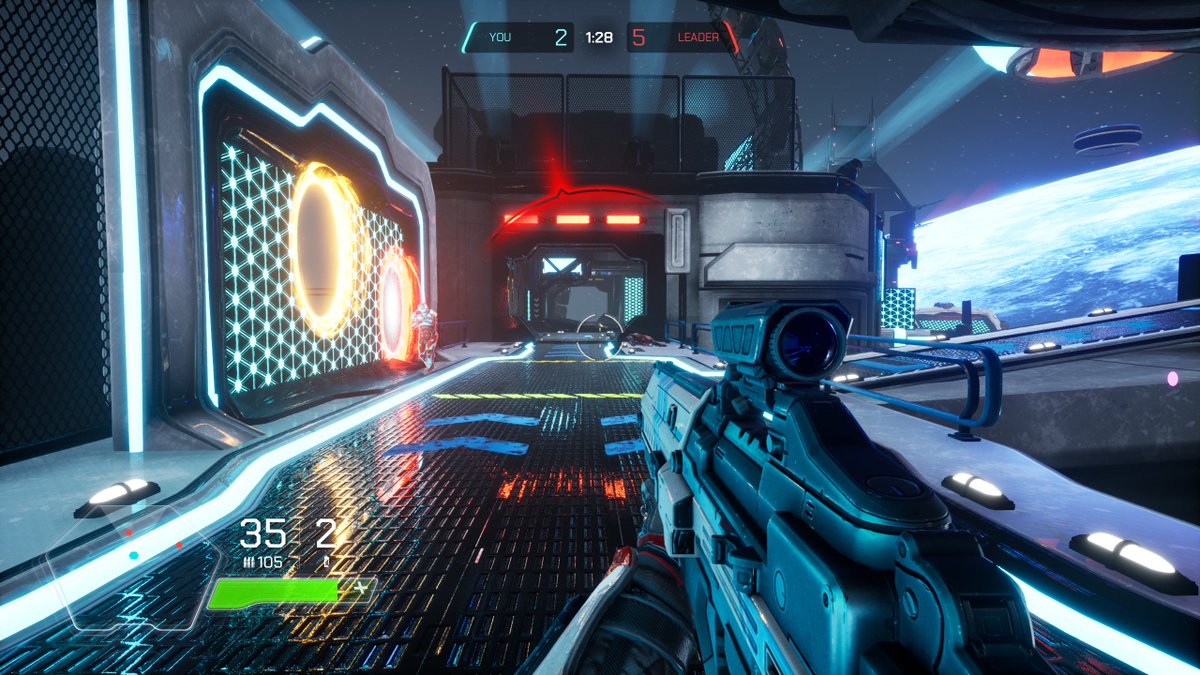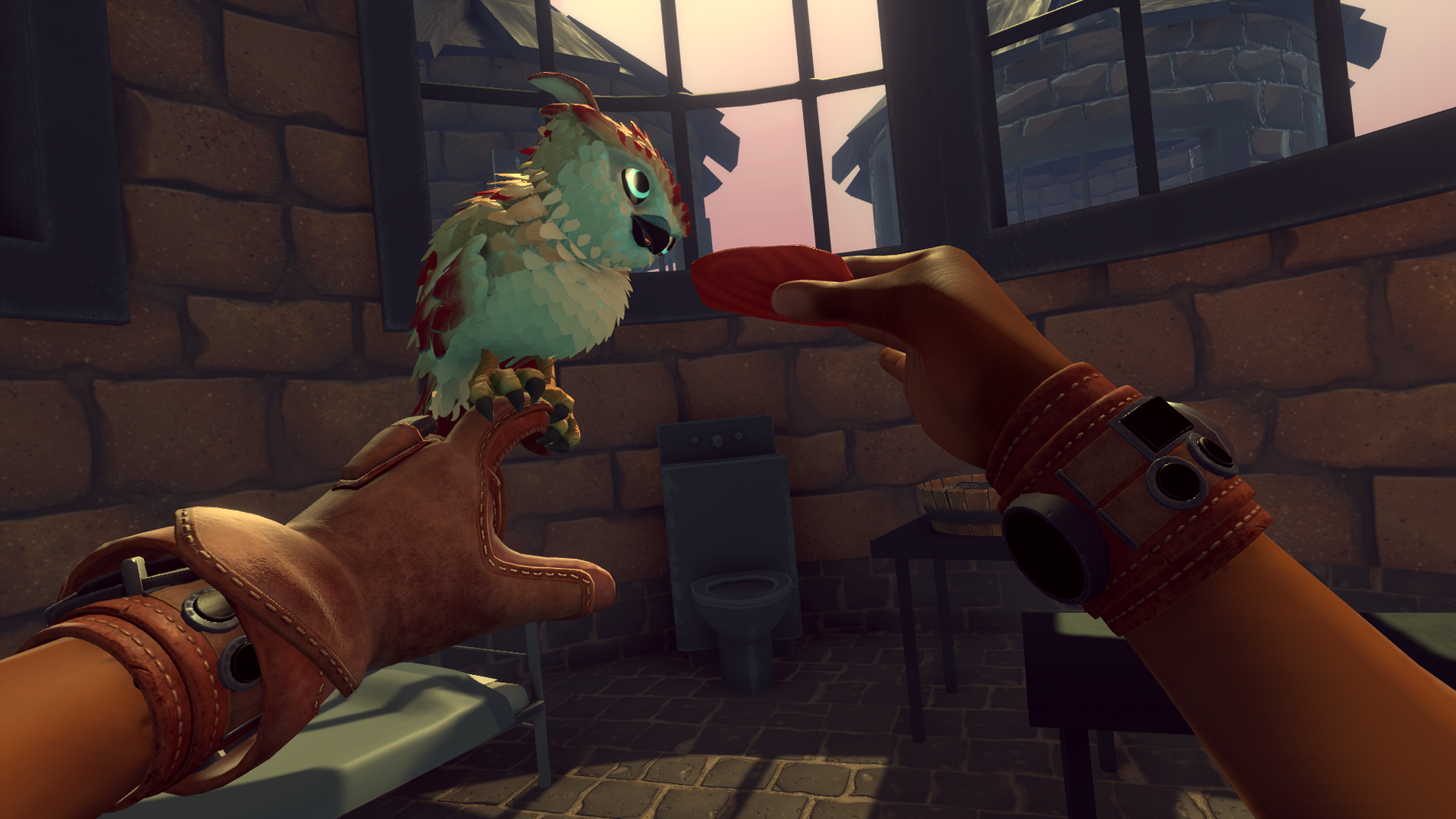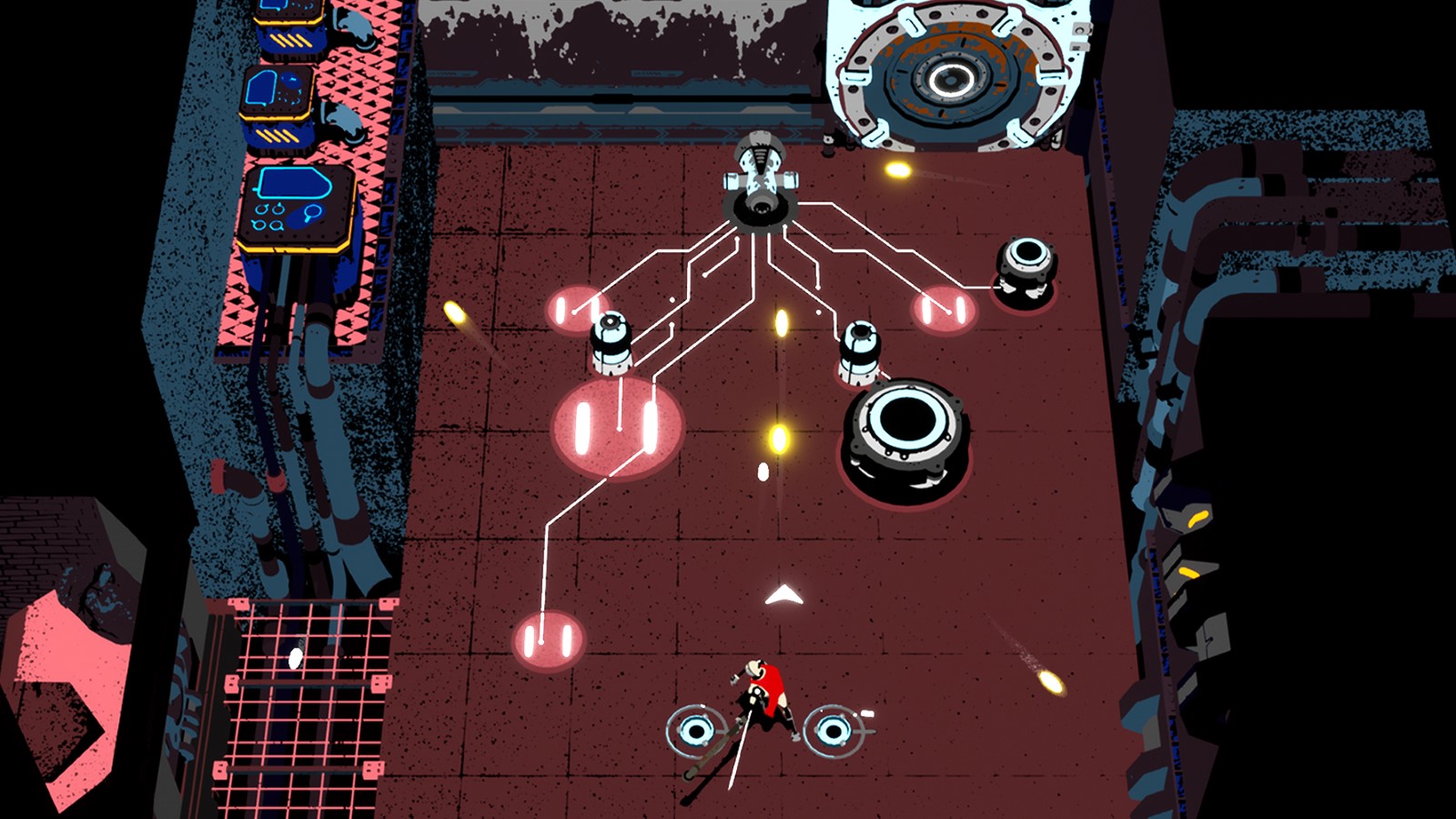
Another day, another plethora of upcoming games. Here are some of the titles that left a strong impression on the second day of the show.
You can check out our coverage of day 1, including info on Dreams, Katana Zero, Killer Queen Black, and Dicey Dungeons here.
Mortal Kombat 11
I am happy to report that in an era where games are increasingly touted for their maturity and ability to convey important messages, there is still a place for the juvenile thrill of Mortal Kombat. While in the grand scheme of the series, MK11 plays similarly to the last two entries, there are many notable changes from its predecessors. Running has been nixed, making for a more patient neutral game. There are now two meters, one used for offense and one for defense. The offense bar is used for the equivalent of EX moves, which bolsters the power of specials and even increases the range or the number of hits on some moves. The defense bar is used for dodges, rolls, and combo breakers. Some particular types of moves, such as Super Armor attacks, even use both meters at once. Additionally, this game’s equivalent to Supers, Fatal Blows, doesn’t use meter at all. Instead, it is automatically unlocked when a player reaches below 30% health. These changes were made because in past titles players would generally horde their meter for EXs and sometimes for combo breakers, forgoing Supers (known as X-ray Moves) almost entirely. Additionally, in terms of combos, the game is being geared towards shorter strings that deal more damage, meaning neutral is exceedingly important, and the pace of matches is quite quick.
While it was difficult to assess the sum of all of these changes in the span of just a few matches, the Fatal Blows system certainly adds an exciting comeback mechanic. The meter changes also feel like a welcome change, allowing for more interesting specific techniques to be employed to turn the tables at any given time. All things considered, MK11 is likely shaping up to be a novice-friendly fighting game with shorter combos, a strong comeback enabler, and controller friendly inputs. However, the revamped meter system will likely add a great deal of nuanced play for series veterans. While the increasingly realistic visuals combined with the absurd extremes of the violence may seem distasteful to some, it all feels thoroughly wrapped in the trappings of camp and exploitation fiction in a way that usually comes across as more cartoonish that ill-natured. Whenever a matchup between two PAX attendees would end, the crowd would giddily turn their attention to the victor as they scrambled to track down a new fatality in the menu screen. If they succeeded at commencing the over-the-top spectacle of violence, we would all react with a combination of repulsion and amazement at the absurd bloodbath, like we were watching a gory body horror flick in a packed theater. In short, it was a lot of fun and a pretty good microcosm of the game in general.
Splitgate: Arena Warfare

What would happen if you combined some of the design philosophies of the early Halo games with a Portal Gun? 1047 Games has sought to answer that question with their multiplayer shooter Splitgate: Arena Warfare, a throwback FPS that strives to combine the mechanics of both to create a competitive title with a high skill ceiling. By stripping out the loadout systems of modern shooters, Splitgate requires players to track down more powerful weapons at respawn centers. While the prevalence of post-Call of Duty 4 loadout systems has undeniably lead to a lot more empowerment and customization in FPSs, there is also a very significant appeal to this old-school approach. Respawn centers naturally create chokepoints and offers a reward for map knowledge, while also offering gratifying moments of empowerment in their own right.
And then, of course, there is the Portal Gun equivalent, a tool that works very similarly to the one that inspired it. Portals can be used to flank enemies, create escape routes, or even set traps that leave your opponents sitting ducks. When you jump through a portal, your momentum carries over, which when combined with your jetpack creates for a great deal of mobility. The only restriction on its use is that can only be used on certain surfaces. Additionally, the core shooting feels tight and includes all of the perks of modern FPS feel, such as hit reticules and sprinting. Splitgate feels both like a throwback and an innovative step forward, its movement options encouraging creative play. And considering how disappointing the last few Halo games have been for many core fans of the series, hopefully, Splitgate will find an audience among this horde of gamers.
Falcon Age

First and foremost, it should be mentioned that the baby falcon that you raise in Falcon Age is criminally adorable, especially in the context of a first-person VR game. Second of all, the game is a promising adventure game with a truly inspired plot conceit. Taking place on a distant planet that is the subject of colonization, you are a falcon trainer who must fight for your heritage and sovereignty against an automated invasion. Against this backdrop, you must raise your adoptive falcon, all the while you hunt, farm, and craft from your resources.
I played through the demo in VR with Move controllers (it also can be played without VR), and I found the control scheme to be quite intuitive. The left move controller is associated with bird actions, while the right is dedicated to your own abilities. You can call back your bird companion to have it perch on your arm, or have it drop off resources. Additionally, you can command it to attack foes or gather resources. Meanwhile, you are armed with stun baton which comes attached with a laser whip, a tool that can be used in combat. Generally while fighting foes you must combine the actions of your falcon with your own attacks to defeat enemies. We can expect the game to be of limited scope, a six to seven-hour adventure with a map about the size of a game like Firewatch. Part falconry sim, part thematically resonant story about fighting back against colonizing oppressors, Falcon Age‘s immersive experience is one of the most exciting upcoming VR experiences. It’s being released April 8th for PS4.
Yuppie Psycho

A slightly lesser-known title, Yuppie Psycho is a striking tone piece from developer Baroque Decay. Described as a “first job survival horror” game, young professionals will likely find a great deal in common with this frantic pixelated depiction of entering the workforce. Taking place in a dystopian society with a staunch caste-system, you are a low-rung member of society who is invited to work at one of the most prestigious companies around. After meeting a thoroughly condescending member of the elite class, and a kind but clearly more qualified colleague, you eventually come into contact with some of your direct coworkers. At first, things seem innocuous enough, as you are on-boarded by a goofy but charming company veteran, and witness the antics of a comedically antisocial cubicle mate.
But it is not long until things descend into the bizarre with mysterious phone calls, murdered employees, references to bosses that have gone insane, and a mysterious monster that gives chase. It’s incredible how much ambiance and tension is captured through the pixelated cutscenes and general mise en scene in such a short time. Admittedly, I’m not entirely sure what the gameplay will consist of, especially considering the game clocks in at around eight hours according to the developers. What I saw mostly played as an adventure/puzzle game, with a couple of moments that required dodging obstacles. Regardless, in its first 30 minutes, Yuppie Psycho demonstrates a specific brand of anxiety, flanked by interesting concepts of class and corporatism. It is hitting Steam on April 15th.
Creature in the Well

Recently revealed at a Nindie showcase, Creature in the Well continues the trend of combining disparate genres to create something entirely new. In this case, the amalgamation is between pinball and 2D Zelda hack and slash gameplay. At first, you are armed with two basic weapons. One is a sword which has the ability to add increasing amounts of energy to spheres you come across, while also suspending them in place. The other weapon is a lead pipe which is used to bash the balls in a direction that you aim with the right stick. You can also dash, keeping the suspended pinballs in front of you. The pinballs can be aimed at bumpers to generate energy and open doors, or to fight enemies.
The format here is a non-procedurally generated sequence of dungeons which can be approached in nonlinear order. Approximately seventeen weapon types can be found throughout the game from these various dungeons, none of which are necessary to progress, but some of which can prove effective against certain enemies or bosses, Megaman style. The core concept of marrying the geometry based reasoning of pinball with a dungeon crawler is a great twist on this style of game, as you must approximate the trajectory of your projectiles and those of your enemies. Additionally, the art style is quite striking, a colorful application of cell-shading that grants these subterranean lairs with a decidedly pop-art aesthetic.




